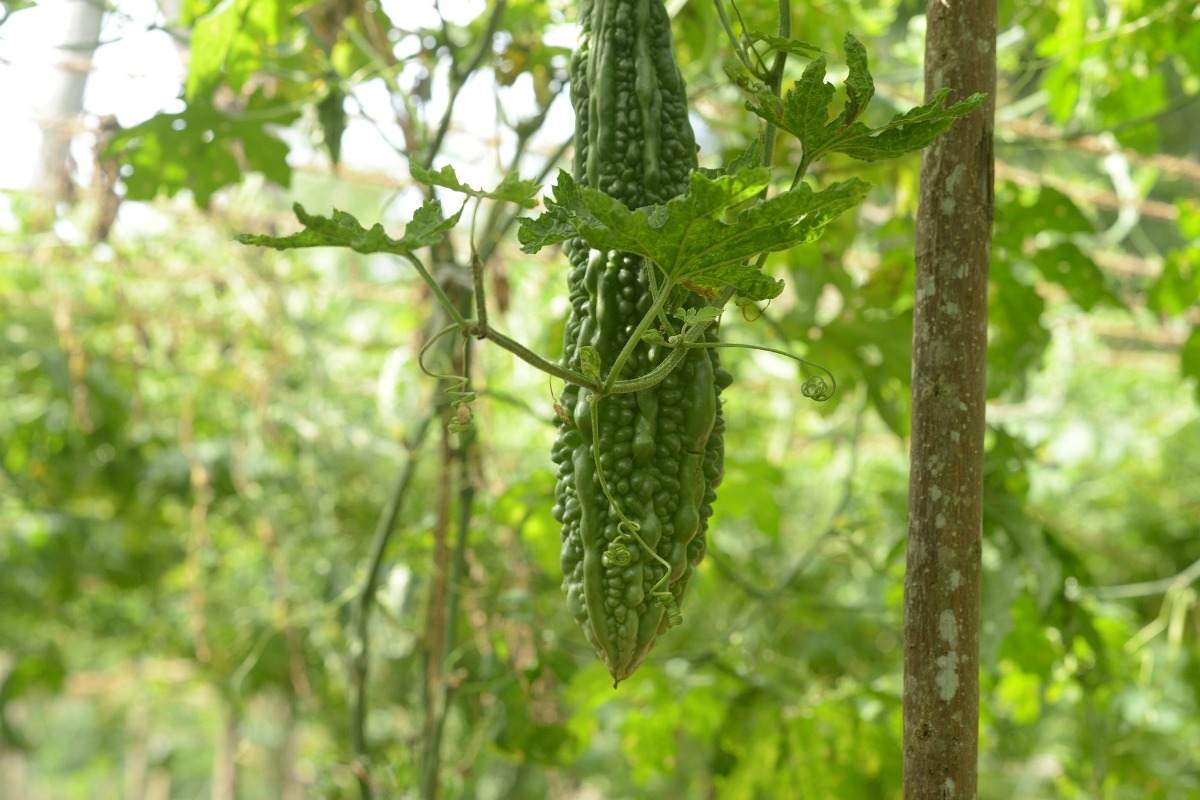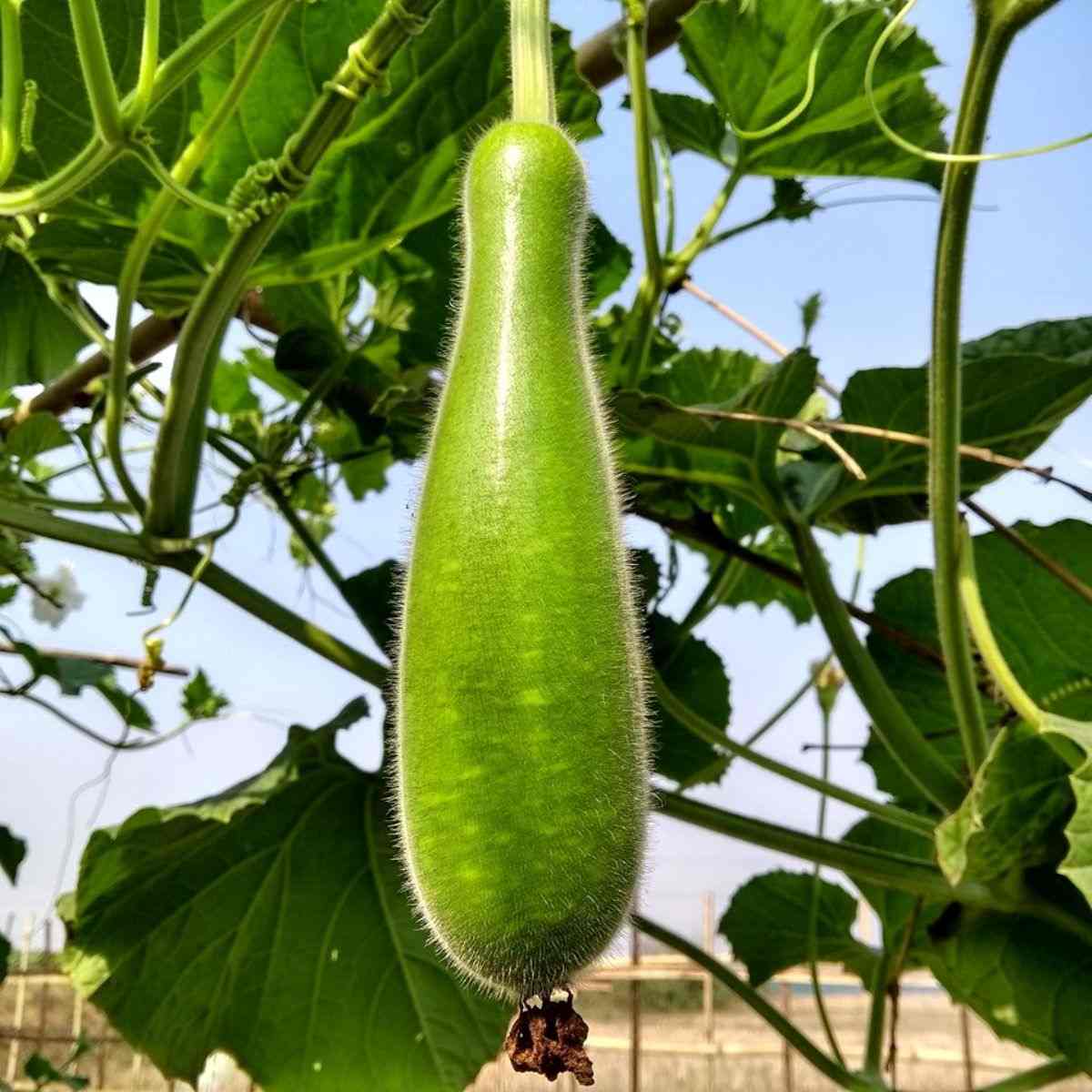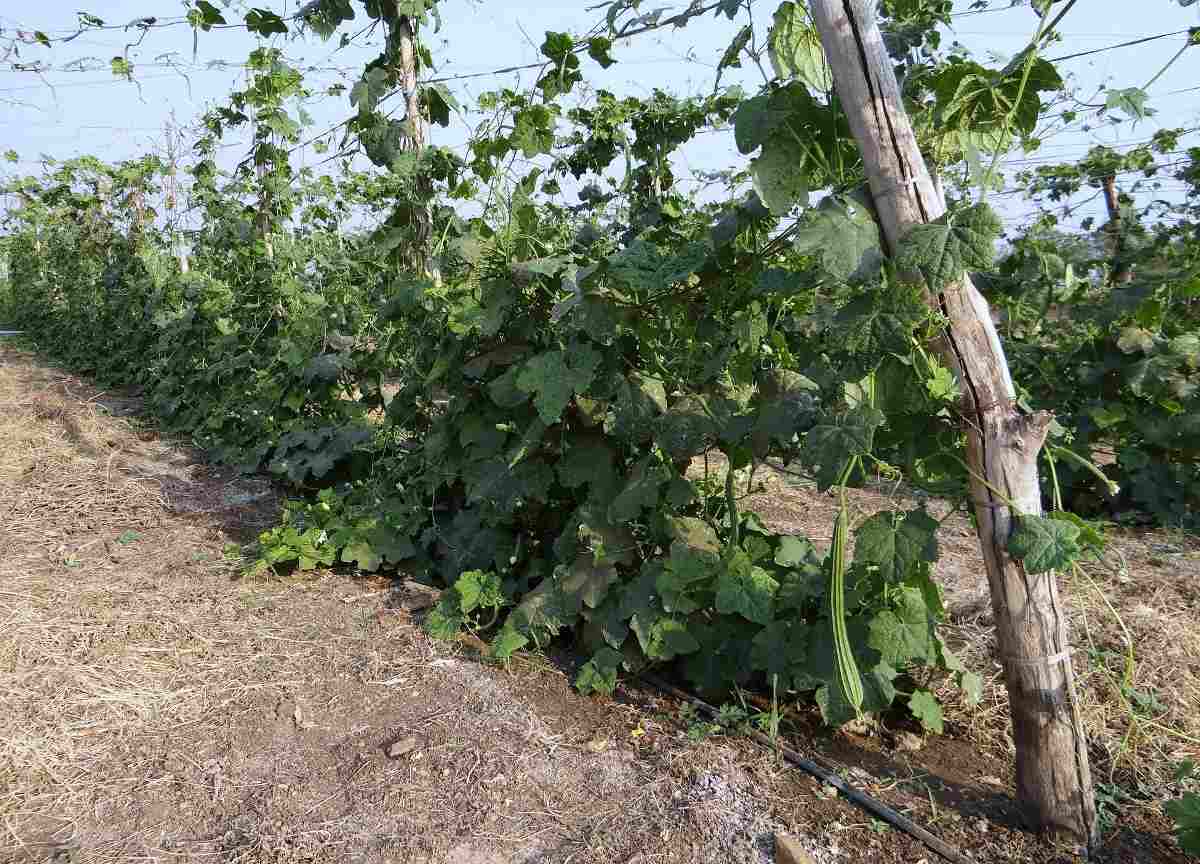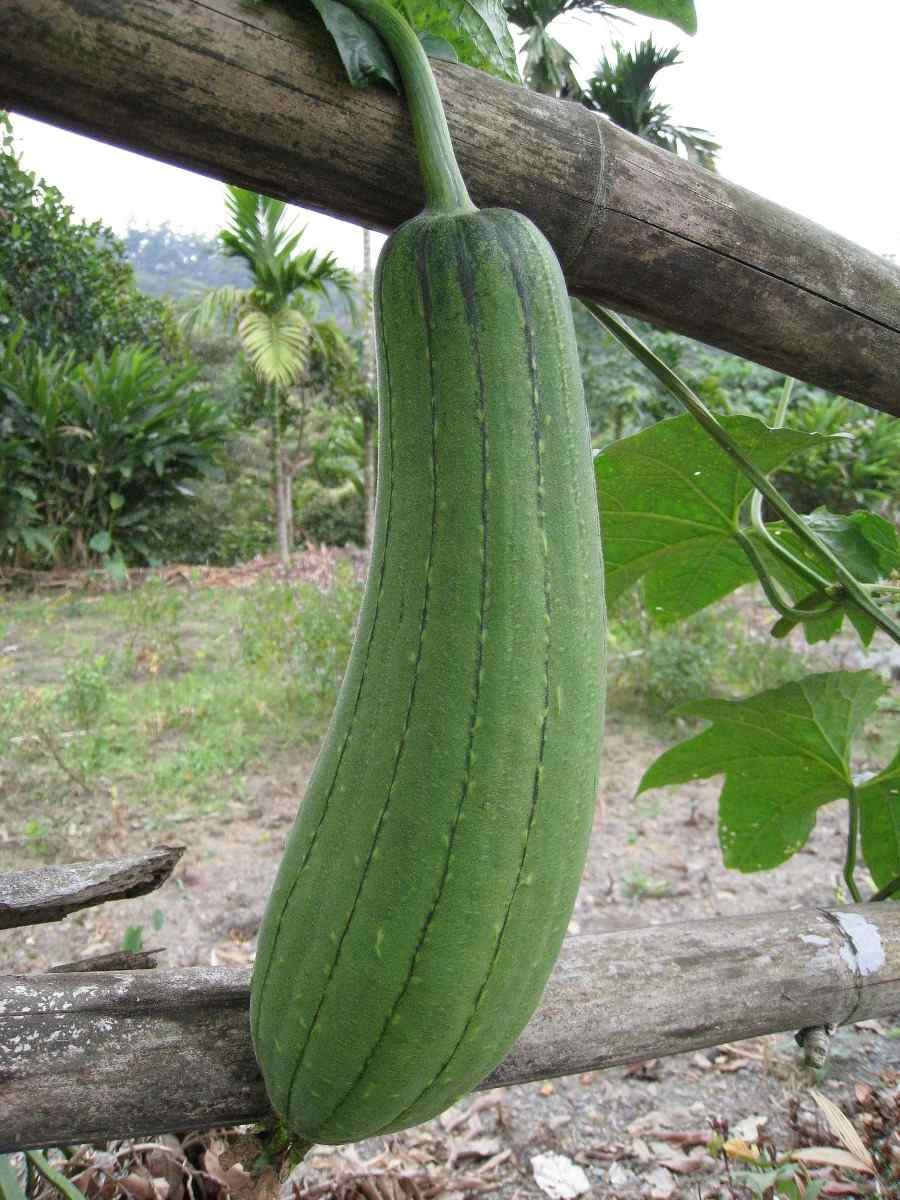Introduction to pollinating vegetable gourds: Plants develop seeds through a process known as pollination and it is the transfer of pollen from the stamen (male flower part) to the pistil (female flower part). Since both a stamen and a pistil are essential for seed formation, they are called essential organs. Most flowers have two other parts, the sepals, and petals, which may help attract insect pollinators. A complete flower has all four parts. If only one of the necessary organs is present in a flower, it is called an incomplete flower. What are we waiting for? Let’s get into the details of pollinating vegetable gourds by hand.
A guide to pollinating vegetable gourds by hand
Pollination is the transfer of pollen from the male parts of the flower or the anther to the female part or stigma of the same or a different flower of the same plant or the different plants. Not all flowering plants have the same pollination requirements. Cross-pollination is the transfer of pollen from flowers of one plant to the flowers of a different plant or different plant variety. Many crops require or advantage from cross-pollination. Self-fertile plants can increase seeds and fruit when pollen is transferred from anthers of a flower to the stigma of the same flower or different flowers on the same plant. Though, such plants are not necessarily self-pollinating. Insects still can be necessary or helpful in moving pollen to the stigmas.
Pollinators provide a necessary ecosystem service for the production of seeds or fruit and diversity maintenance. There is unequal pollination require of different crop plants, for example, cross-pollinating plants, self-fertile plants, self-sterile plants, cross-compatible varieties, monoecious, dioecious, etc. Properly pollinated seeds hold larger seed vigor, longer viability, pose higher germination capacity, seedling vigor, pest resistance, and yielding capacity. Mustard seeds have higher oil content.
All gourds have separate male and female flowers. The female flower with a small fruit attached to it needs to be pollinated to produce into a matured fruit. Honey bees and insects help in pollinating the flowers. Though you can find lots of unpollinated young female flowers withering away. It is a good practice to hand-pollinate gourds. Pluck a fresh male flower and rub it over a female flower to transfer pollen and you can use a soft brush also for pollination.
Gourds belong to one of three types they are hard shells, ornamentals or luffas. Luffas and ornamentals bear orange flowers that open during the day, while hard-shells have night-blooming white color flowers. The flowers of both types stay open for less than 24 hours. And gourds naturally rely on flying insects to pollinate the flowers in this time frame.
Hand-pollinate the gourds
Each gourd vine bears male and also female flowers. The male flowers generally appear first. It is easy to tell male from female flowers as the female flower will have the small gourd shape below the bloom, while the male flower grows on a stem without the ball shape below the flower.
The first vine that grows will have male flowers, but make it produce more female flowers by cutting the ends of the vine back. Left on their own, gourds depend on insects such as bees and beetles for the pollination process. One problem with this is that gourds cross-pollinate easily, and the seeds the gourd produces will generally not be true and will produce a gourd with characteristics of both plants.
You should not miss the Cost of Drip Irrigation per Acre in India.
Another side effect is that the germination rate of the seeds will be poor. Normal germination for gourd seeds could be as low as 25%, but by hand pollination, germination can be as high as 80% or more. Hand pollination is a simple procedure. It involves shaking or tapping pollen from the male flower to the female flower.
Identify male flowers and female flowers on your gourd plant. Female flowers contain a large, bulbous growth on the vine just beneath the blossoms, while male flowers lack this growth. Isolate male and female blooms by covering them by a muslin drawstring bag. And pull on the drawstring to close the bag.
Also, return to hand-pollinate the flowers when they open naturally. Orange flowers generally open in the morning, and white flowers open at dusk. Then remove the bags from the flowers. Place a male flower and bend it toward a female flower. And tap the male flower gently to shake pollen onto the female flower. Otherwise, break off the male flower and use it to dust the female flower. Also, one male flower carries enough pollen to pollinate a few female flowers. Then cover the pollinated female flowers with the muslin bags. This prevents insects from cross-pollinating the plant and removes the bags after 48 hours.
Bitter gourd pollination
Bitter gourd (Momordica charantia Linn.) belongs to the Cucurbitaceae family and known as one of the bitterest fruits. Bitter gourd is a warm-season crop and the temperature suitable for its growth and flowering is 25 to 30°C. Bitter gourd crops can be grown in places of lower temperatures and high rainfall areas. As the bitter gourd seeds have a hard seed coat, germination is difficult to take place when the temperature range is below 10°C. The soil must be well-drained and fertile. Sandy soil will suit the crop.

Vines normally begin flowering about 5 to 6 weeks after planting. Male flowers open first, followed in a week or by female blossoms. Both flowers are yellow. Female flowers have swelling or the ovary at the base of the bloom resembling a tiny melon. Bees and pollinating insects visit both blooms, transferring pollen from male flowers to female flowers. Generally, male blooms live only one day; they open in the morning and fall from the plant in the evening and flower drop is not uncommon.
The ovary of pollinated female flowers will begin to enlarge and fruit will mature in 2 to 4 months. Mature fruits will be ready to pick 12 weeks after planting. And they will be light green and juicy with white, bitter flesh. Bitter gourd plant is a cross-pollinated crop. Insects, particularly bees, pollinate flowers. The pollination process can be a problem during the wet season since bees are less active during overcast conditions. The introduction of beehives ensure good pollination and avoid the need for the hand-pollination process.
You may also like the How to Find Soil Health, Soil Health Indicators.
Hand pollination – Bitter gourds are pollinated by insects and honeybees. If there are flowers but no fruit forms and you find no bees at work in the garden, then you can rightfully suspect that pollination has not occurred. Pollination can be done by hand and this is true for cucumbers and squash as well: pick male flowers and transfer pollen by touching the center element of the male flowers against the center element of the female flowers.
Pollination snake gourds vegetable
The snake gourd (Trichosanthes cucumerina) is a creeping plant and it bears elongated twisted fruits and is generally consumed as a vegetable. Even though, snake gourd plant grows well in any good soil, however, they yield the highest productivity in the areas with sandy loam soils. The pH value contains in the soil must not be extreme and needs to be limiting to 6.5-7.5. The cropland must be well-drained and aerated.
Snake Gourd Growing Temperature – During their growing stage, a minimum 18 to 21°C and afterward 24-27° C optimal temperature is most ideal for snake gourd growing. The extreme climate is unsuitable for snake gourd cultivation.
Snake gourd requires bees or insects to help in the pollinating process for setting fruits. The hand pollination process can be done when flowering is active during the daytime. The male flowers are fully open before sunrise and that is the best time for hand pollination.
Snake gourd wants insects to carry out the pollinating process for setting fruits. The pollination process can be a problem during the wet season since bees are less active during overcast conditions. To ensure a good pollination process, manual pollination can be resorted to, by picking up male flowers and transferring pollens to female flowers. And introducing beehives can do away with the need for hand pollination.
Pollinating bottle gourds vegetable
Bottle gourd plant is an important crop grown throughout in northeastern region. The plant has a trailing habit and the fruit in green stage and leaves with stem are used as vegetables. The tribal community uses hard shells as utensils and for the preparation of musical instruments. The fruit pulp is a good source of fiber-free carbohydrates. Sandy loamy soils rich in organic matter with good drainage and the pH ranges from 6.5 to 7.5 are suited for bottle gourd cultivation. This crop wants a moderately warm temperature.

Bottle gourd produces both male flowers and female flowers. The white flowers bloom at night and they drop off after pollination. The female flower develops into bottle gourd, and this sets them apart from their male counterparts. Sometimes, none of the female flowers generate fruits but drop off without growing into a bottle gourd. This is due to the failure of pollination. Even though nature does its magic every day, it’s normal to go ahead and hand pollinates the bottle gourd. The pollination process depends on bees. In general, if the pollination does not occur, the female flower will produce initially but fall off later. So if a garden is lack of bees you should go for hand pollination.
Incase if you miss this: How to Prepare Vermiwash.
Hand pollination process can be done by using a soft brush. Run the soft brush on the opened male flower and on to the female flower. Repeat the procedure for about 2 to 3 days. (Both flowers look similar but male flower grows on long peduncle and female flower on short peduncle however it has an ovary in the shape of the fruit).
Pollinating ridge gourds vegetable
Ridge Gourd popularly known as Loofa in many countries, is a pulpy vegetable and belongs to the Cucumber family. It is tastier and generally used in day to day cooking in India. The warm and humid climate is favorable for plant growth and development. The optimum temperature requirement is 25 to 30°C. Ridge gourd plants can be grown in all kinds of soil but loam, clay loam, and silt soil are best suited for its cultivation. Proper drainage is highly useful.

A ridge gourd produces both male and female flowers. The female flower develops into ridge gourd, and this sets them apart from their male counterparts. Honey bees and insects help in pollinating the flowers. Sometimes, none of the female flowers make fruits but drop off without growing into a ridge gourd. This is mainly due to the failure of the pollination process. Even though nature does its magic every day, it’s normal to go ahead and hand pollinates the ridge gourd.
Ridge gourd produces different male and female flowers. The female flowers contain a small fruit attached to its bottom while male flowers do not have the fruit. Pollination is mainly done by bees. In case you do not get bees in your garden you want to hand pollinate the flowers. Hand pollination is simple. Just pluck a healthy male flower and then remove its petals gently without disturbing its stamen. And now rub the stamen gently on the stigma of the female flower. You can use a single male flower to pollinate 2 to 3 female flowers.
You may also check the Cost of Cultivation of Avocado.
Pollinating sponge gourds vegetable

Sponge gourd is also called as “Luffa” sponge gourd. The vines of sponge gourd attain a height of about 30 feet or more. The fruits of sponge gourd plants are cylindrical in shape and outer skin is smooth green. The fruit contains white inner flesh which is a fibrous and similar flavor too bitter melon. And it is grown in a variety of soil types. It gives the best result grown in sandy loam soil. The pH value of soil ranges from 6.5 to 7.0 or neutral to slightly alkaline soil is good for plantation. The flowers of sponge gourd open in early morning hours and suitable for selfing or crossing almost throughout the day.
Pollinating ash gourd vegetable
Ash gourd is a cucurbitaceous crop grown throughout in the northeastern region and it is an annual vine trailing on the ground. It is grown for its flesh fruit. It grows well in a warm, humid tropical climate. Ash gourd thrives on all types of soil but loam, sandy loam, and clay loam are best suited for its cultivation. The optimum pH level is 6.5-7.5. Ash gourd is also known as a white gourd, winter melon or fuzzy melon. It is a rich source of Fat, protein, carbohydrates and also fiber.
Ash gourd is also known as white pumpkin is a very large fruit and is eaten as a vegetable when it matures. It is a cross-pollinated crop. Insects, particularly bees, pollinate flowers. Pollination can be a problem during the wet season while bees are less active during overcast conditions. The introduction of beehives ensures good pollination and avoids the need for hand pollination process.
That’s all folks about the process of pollinating vegetable gourds by hand. You may be interested in How to Grow Sweet Potato on Terrace in Pots.
The report is very very useful to the farmers of our country At the same time it is a sorry state of affair that. hardly 1 prevent of them may have read it This should be given in Hindi and other languages